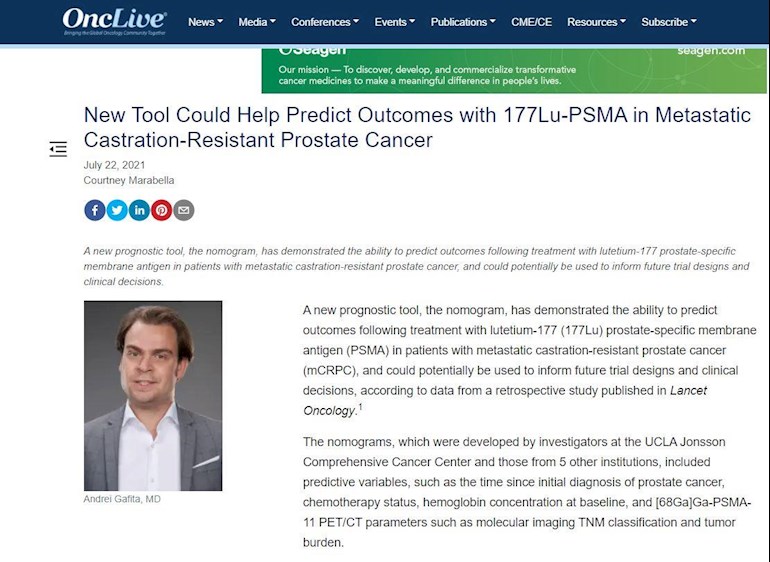My take on this article is that 177Lu-PSMA is not quite there yet...I am a bit disappointed...was hoping for a lot better results...dont know if there is anything else out there with better news...Cheers
210726 ART New Tool Could Help Predict Outcomes with 177Lu-PSMA in Metastatic Castration-Resistant Prostate Cancer
The nomograms, which were developed by investigators at the UCLA Jonsson Comprehensive Cancer Center and those from 5 other institutions, included predictive variables, such as the time since initial diagnosis of prostate cancer, chemotherapy status, hemoglobin concentration at baseline, and [68Ga]Ga-PSMA-11 PET/CT parameters such as molecular imaging TNM classification and tumor burden.
177Lu-PSMA is a radiolabeled small molecule inhibitor that binds with high affinity to PSMA and delivers β particle radiation.
no models exist to efficiently evaluate the prognosis for patients who are later in their disease course and are potentially eligible for treatment with 177Lu-PSMA.
As such, investigators sought to develop nomograms as a way to predict outcomes with the therapy in this population.
To be eligible, patients had to have received an intravenous injection of 177Lu-PSMA, at a dose ranging from 6.0 GBq to 8.5 GBq once every 6 to 8 weeks for a maximum of 4 to 6 cycles, without experiencing disease progression or notable toxicity.
Additionally, patients had to have a [68Ga]Ga-PSMA-11 PET/CT scan.
Among the 270 patients included, the median age across the cohorts was 71 years (range, 65-76), and
the median time since initial diagnosis was 6.5 years (range, 4-12).
Fifty-eight percent of patients had received treatment with 177Lu-PSMA as part of compassionate access programs, and
42% had received the therapy as part of a clinical trial.
Results:
At a median follow-up of 21.5 months, 83% of the 270 patients had died and 91% experienced PSA progression.
In complete set, the median OS overall survival for low- and high-risk patients were 19.9 months (95% CI, 17.5-22.3) vs 8.2 months (95% CI, 7.2-9.1), respectively (P <.0001).
The median PSA-PFS progression Free survival in these subsets were 8.8 months (95% CI, 7.3-10.3) vs 3.3 months (95% CI, 2.8-3.7), respectively (P <.0001).
